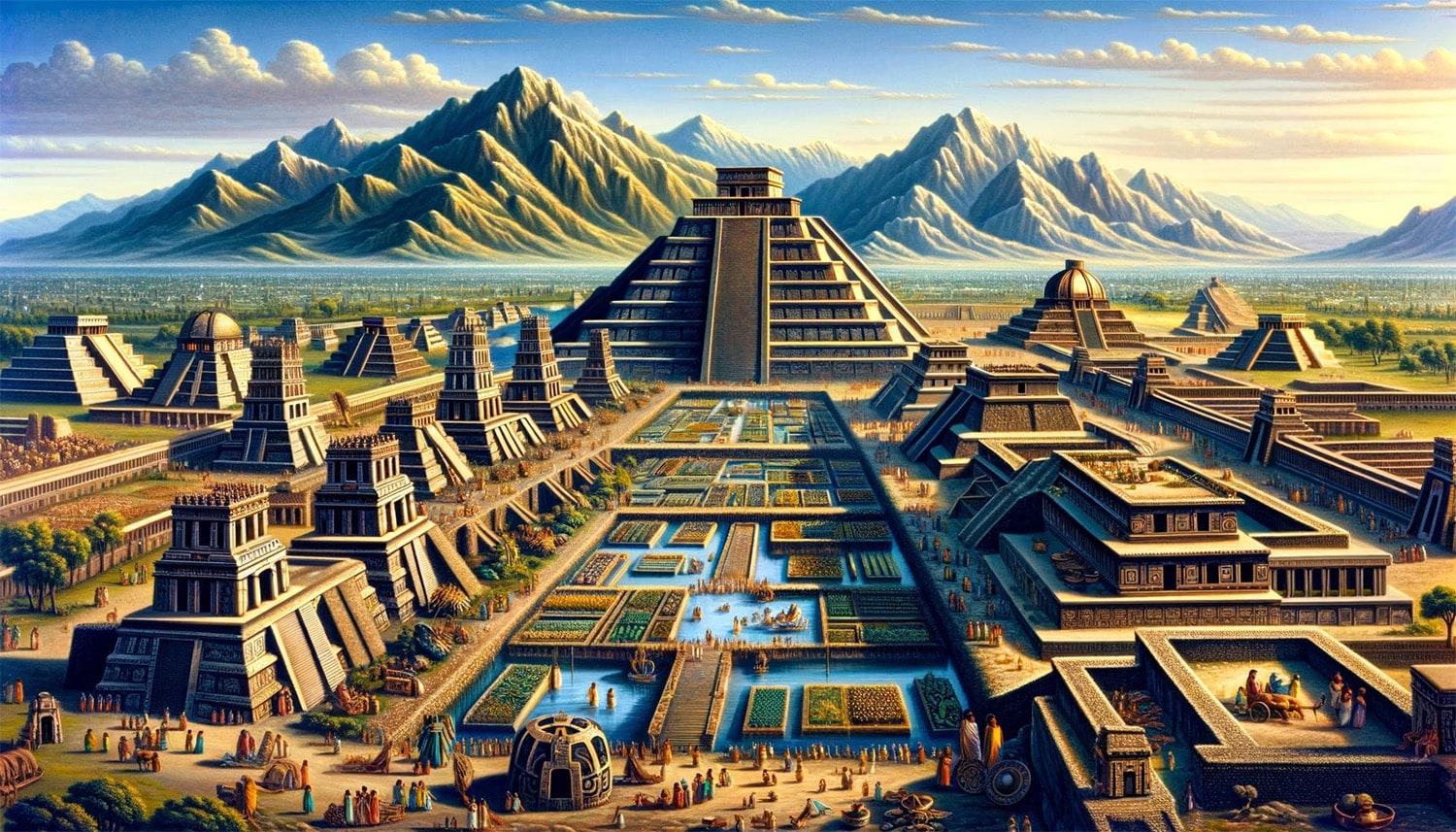
32 interesting facts about Aztec Empire
- 👁️ 271
The Aztec Empire, one of the most remarkable and powerful Mesoamerican civilizations, thrived in the region of central Mexico from the 14th to the early 16th century. Known for their complex social, political, and religious structures, the Aztecs were also renowned for their architectural and artistic accomplishments. Their capital, Tenochtitlán, was an engineering marvel that amazed the Spanish conquistadors upon their arrival. The Aztecs were skilled warriors, and their empire expanded through strategic military campaigns and alliances. Despite their eventual downfall at the hands of Spanish invaders, the legacy of the Aztec Empire endures in Mexico’s culture and history. Here are 32 fascinating facts about the Aztec Empire that underscore its significance and complexity.
- The Aztec Empire was established in 1428 after the Triple Alliance between the Mexica of Tenochtitlán, the Texcoco, and the Tlacopan.
- Tenochtitlán, the capital, was built on an island in Lake Texcoco and connected to the mainland by causeways.
- The Aztecs used a solar calendar and a sacred calendar, the latter consisting of a 260-day cycle used for religious and ceremonial purposes.
- They practiced human sacrifice, believing it essential to maintain harmony and order in the universe.
- Aztec agriculture relied heavily on chinampas, or floating gardens, for crop cultivation.
- The Great Pyramid of Tenochtitlán was dedicated to Huitzilopochtli, the god of the sun and war.
- Aztec society was highly stratified, with a rigid class system topped by the emperor, or tlatoani.
- The Aztecs developed a sophisticated system of writing that combined ideographic and pictographic glyphs.
- They were skilled in various crafts, including featherwork, pottery, and metalwork.
- The Aztec economy was based on agriculture, tribute from conquered regions, and trade.
- Cocoa beans were used as currency in the Aztec marketplaces.
- The Aztecs believed the world had been created and destroyed in four cycles before the current era, or Fifth Sun.
- Montezuma II was the emperor of the Aztec Empire at the time of the Spanish conquest.
- The Spanish, led by Hernán Cortés, arrived in Tenochtitlán in 1519 and were initially received as guests.
- Smallpox and other European diseases devastated the Aztec population, which had no immunity to these illnesses.
- The Florentine Codex is one of the most important sources of information on Aztec culture, compiled after the conquest by Spanish friar Bernardino de Sahagún and indigenous scholars.
- Aztec warriors were organized into different military societies, such as the Jaguar and Eagle warriors.
- The empire was divided into provinces, each governed by a local ruler who paid tribute to the emperor.
- Aztec law was complex and included punishments such as death, slavery, and fines.
- The Tlatelolco marketplace was the largest market in the empire, attracting thousands of traders daily.
- Aztec children were educated based on their gender and social class, with boys trained in warfare and girls in domestic tasks.
- The Aztecs had an advanced understanding of herbal medicine and practiced trepanation, a type of skull surgery.
- The empire’s decline began with the Spanish siege of Tenochtitlán in 1521, leading to the city’s fall.
- The Spanish destroyed Tenochtitlán and built Mexico City on its ruins.
- Aztec art was rich in symbolism and often depicted gods, rulers, and mythological scenes.
- The empire’s road system facilitated trade and military mobilization.
- The Aztecs practiced a form of slavery, but it differed significantly from European models.
- They had a complex system of taxes and tribute, requiring conquered peoples to provide goods such as textiles, food, and animals.
- Aztec mythology included a vast pantheon of gods, each associated with different aspects of life and nature.
- Aqueducts supplied fresh water to Tenochtitlán from springs located miles away.
- The Templo Mayor, the main temple of Tenochtitlán, was the center of Aztec religious life.
- Despite their military prowess, the Aztecs placed a strong emphasis on education and the arts.
The Aztec Empire’s contributions to civilization were immense, spanning the realms of architecture, agriculture, art, and governance. Despite the catastrophic impact of the Spanish conquest, the Aztecs’ cultural and technological achievements continue to influence contemporary Mexican society. Their sophisticated understanding of the natural world, intricate social structures, and profound religious beliefs offer valuable insights into one of history’s most dynamic civilizations. As we continue to uncover the mysteries of the Aztec Empire, we gain a deeper appreciation for the complexity and richness of pre-Columbian America.
The Aztec Empire, one of the most remarkable and powerful Mesoamerican civilizations, thrived in the region of central Mexico from the 14th to the early 16th century. Known for their complex social, political, and religious structures, the Aztecs were also renowned for their architectural and artistic accomplishments. Their capital, Tenochtitlán,…